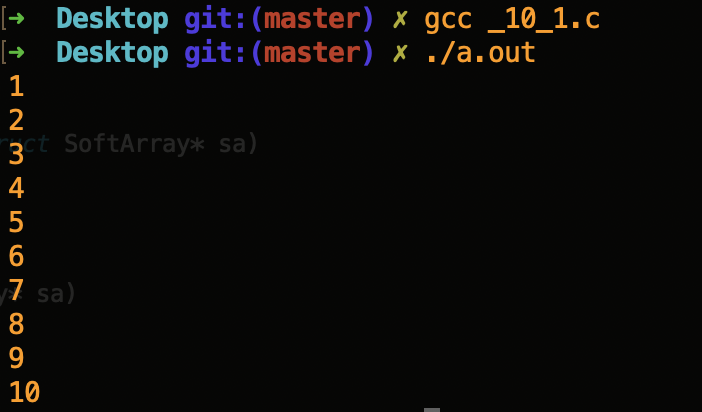柔性数组:大小待定的数组
- c语言中结构体最后一个元素可以是未知大小的数组
如:
struct SoftArray
{
int len;
int array[]; //柔性数组,不占用存储空间
};
柔性数组的使用方法:(创建一个大小指定的数组并赋值打印出来)
#include<stdio.h>
#include<stdlib.h>
//柔性数组的使用方法
struct SoftArray
{
int len;
int array[]; //柔性数组,不占用存储空间
};
struct SoftArray* create_soft_array(int size)
{
struct SoftArray* ret = NULL;
if(size > 0)
{
ret = (struct SoftArray*) malloc(sizeof(struct SoftArray) + sizeof(int)*size);
ret -> len = size;
}
return ret;
}
void delete_soft_array(struct SoftArray* sa)
{
free(sa);
}
void func(struct SoftArray* sa)
{
int i = 0;
if(NULL != sa)
{
for(i = 0; i < sa->len ;i++)
{
sa->array[i] = i+1;
}
}
}
int main(int argc, char const *argv[])
{
int i = 0;
struct SoftArray* sa = create_soft_array(10);
func(sa);
for(i = 0;i < sa->len;i++)
{
printf("%dn", sa -> array[i]);
}
delete_soft_array(sa);
return 0;
}

最后
以上就是安静机器猫最近收集整理的关于c语言动态设定数组大小 —— 柔性数组的全部内容,更多相关c语言动态设定数组大小内容请搜索靠谱客的其他文章。
本图文内容来源于网友提供,作为学习参考使用,或来自网络收集整理,版权属于原作者所有。








发表评论 取消回复